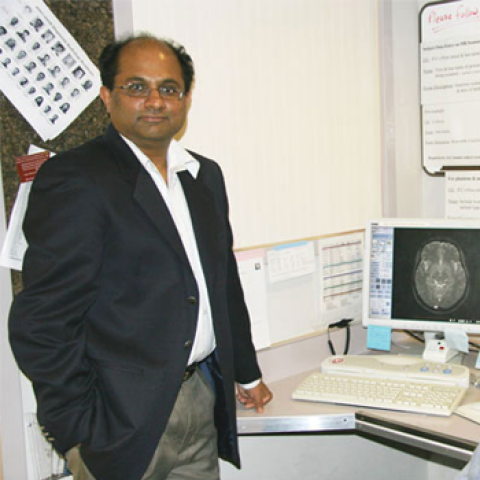Interdisciplinary Initiatives Program Round 2 – 2002
Vinod Menon, Psychiatry & Behavioral Sciences
Gary Glover, Radiology
Understanding the neural basis of brain function requires knowledge about the spatial and temporal aspects of information processing. Functional magnetic resonance imaging (fMRI) and electroencephalography (EEG) represent complementary brain imaging techniques in terms of their spatial and temporal resolution. fMRI yields highly localized measures of brain activation, albeit with a temporal resolution significantly longer than the time needed to make perceptual and cognitive judgments in most laboratory experiments. EEG has the required temporal resolution to study the dynamics of brain function, but its poor spatial resolution prevents resolution of the underlying neural sources.
Combining information from fMRI and EEG holds great promise for examining the spatial and temporal dynamics of sensory and cognitive processes underlying brain function. A cross-disciplinary and multimodal imaging approach will be used to expand theoretical and practical knowledge regarding the time course of spatially distributed neural activity. Towards this end, we propose to develop and apply novel imaging, experimental, computational, and modeling procedures for acquiring and combining fMRI and EEG data.



